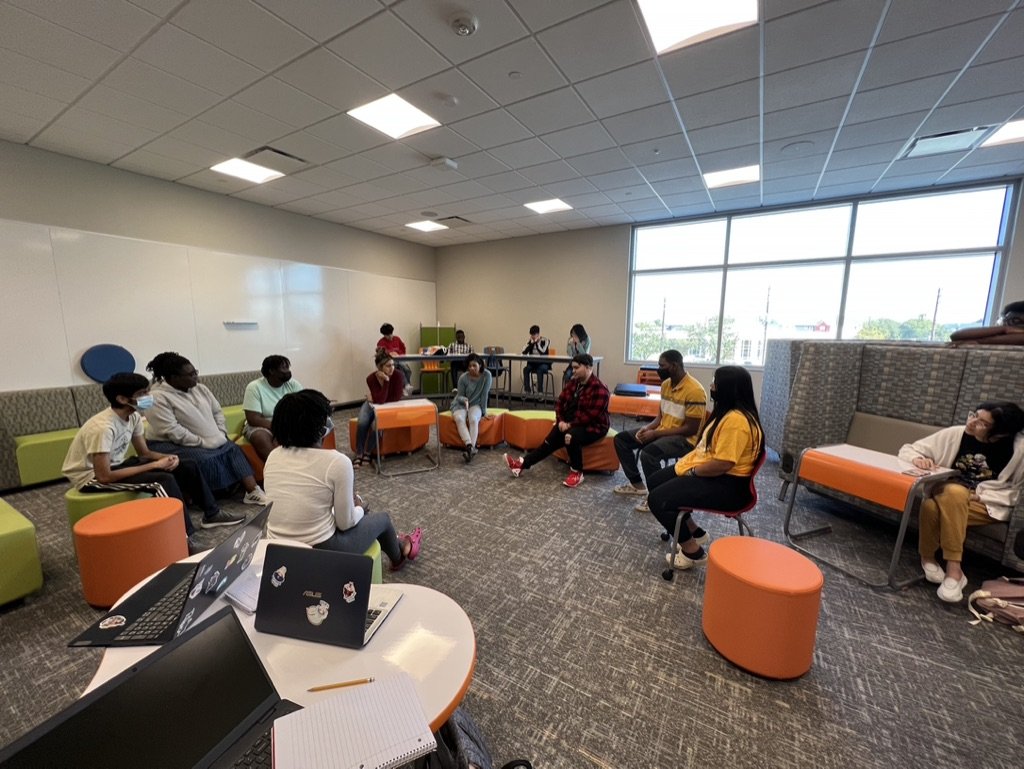Experimental Classroom: Discussion
Rearranging for Discussion
Read more about the experimental classroom in Part I and Part II.
There are two types of discussions that I use that require students to move into groups: Spider Web and Jigsaw. The experimental classroom is great for that because we could arrange the furniture just how we wanted.
Spider Web
The spider web assignment comes from the book The Best Class You Never Taught by Alex Wiggins. Here’s what it stands for:
Synergetic – Working as a team.
Practiced – Utilize the format multiple times to improve on it.
Independent – The instructor does not intervene.
Developed – Aim for deep analysis of the topic/text.
Exploration – Help each other explore the topic/text.
Rubric – The rubric is used for self and peer assessment.
How it Works
Students read an assigned reading and answer guided reading questions about it, which they turn in to me in advance. I split the class into two groups. On the day of the discussion, I flip a virtual coin to see which group goes first. Then, I turn them loose! Because the instructor does not intervene, the responsibility falls on them to make sure everyone speaks for an equitable amount of time. I use the program Equity Maps to keep track.
In the Room
We moved ten seats into a circle in the center of the room. There was plenty of room on the outside for students to observe. The students in the circle were able to engage without awkward angles as what usually happens in a traditional classroom.
Jigsaw
A jigsaw discussion involves a “home” group and an “expert” group. This is a good strategy to review short readings or primary sources. The pieces of the puzzle come together with this activity.
How it Works
Give each student a letter and a number (eg A1, A2, A3, A4, B1, B2, B3, B4). The Letters represent their home group; the Numbers represent their expert group.
I give each student the same reading. Independently, they read the original document and annotate with relevant observations.
Each number has a different interpretation or set of questions based on the original document. They find their expert group (their number) and answer questions assigned to the interpretation.
Then, they find their home group (their letter) and report what they discussed in expert groups. This means that each student will present and hear multiple interpretations.
I wrap it up with a whole class discussion, highlighting important points from the lesson.
In the Room
Again, we moved the furniture to accommodate the discussion groups. Groups were 4-5 students, so we needed more intimate circles. They also wrote their observations on the markerboard desks/walls.








